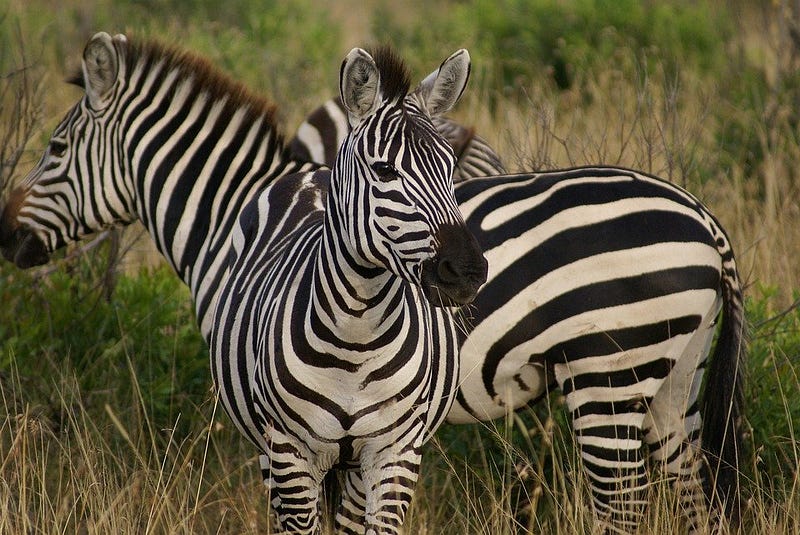The Structure Of Species: How organisms are classified
By Maya Krause, Environmental Science, 2022

In 2019, the California Academy of Sciences added 71 new species to the 1.2 million species already classified. The discoveries this year ranged from Cirrhilabrus wakanda, a reef fish found off the coast of Tanzania named for the fictional city from Marvel’s Black Panther, to Trembleya altoparaisensis, a Brazilian plant with white flowers that has not been collected in over 100 years. How do scientists know where these organisms fit with the billions of others on Earth?
The process of finding where an organism fits in the structure of the giant family tree of all the discovered species is the scientific field of taxonomy. Taxonomy is based around the structure of the family tree, the hierarchical groupings of organisms based on different biological traits. Each known organism is labeled with a kingdom, phylum, class, order, family, genus, and species, with each subsequent label becoming more and more specific. For example, the kingdom Animalia is comprised of multicellular organisms whose cells are eukaryotes. Within Animalia lie 35 phyla, ranging from Arthropoda (animals with an exoskeleton) to Tardigrada (animals that are segmented four times, also known as water bears) to Chordata (animals that have a backbone), and so on.
Taxonomy is based around the structure of the family tree, the hierarchical groupings of organisms based on different biological traits.
For over 2,000 years, scientists have been classifying animals and plants and dividing them by their similarities. Aristotle was the first scientist who attempted to classify all known creatures in his fourth century BC text History of Animals. But the modern process of taxonomy that has become universally accepted and streamlined by the scientific community was invented in 1735 by Carl Linnaeus, a Swedish biologist. Before Linnaeus, biologists had grouped organisms by arbitrary criteria with no hierarchical structure, and often used long Latin names that were not consistent throughout the scientific community. Linnaeus used hierarchical groupings based on shared biological criteria to define organisms’ relation to one another. He was also the first biologist to consistently use two names to describe an organism: the genus and the species. Thanks to Linnaeus, the world knows humans as Homo sapiens.
When scientists think they have discovered a new species, they will start by going down through the existing classifications, comparing the traits of the possible new species with the traits of already classified species. For instance, Cirrhilabrus wakanda, commonly called the Vibranium fairy wrasse, shares the features of other wrasses, so this new fish was placed in the family Labridae. However, Cirrhilabrus wakanda has short pelvic fins and bright purple scales covering two-thirds of the body, which distinguish this new species of fish from other wrasses.
When scientists think they have discovered a new species, they will start by going down through the existing classifications, comparing the traits of the possible new species with the traits of already classified species.
Taxonomy starts to get tricky when determining whether an organism’s characteristics are part of the diversity of one species, or a distinction between two different species or multiple subspecies. Most scientists consider that if two organisms can mate and produce fertile offspring, they are members of the same species. But with billions of organisms on Earth, there is no way for scientists to track the mating patterns of all individuals to determine their classification. Scientists have also begun to use DNA sequencing to determine the relatedness of organisms, but this is also inconclusive. For instance, humans share almost 99 percent of DNA with chimpanzees, but clearly are different species. Therefore, most scientists continue to base their classifications on characteristics of the organism.
Classification affects conservation both legally and financially. An organism ranked as a species is much more likely to be conserved. If a species is split into two subspecies, one subspecies can lose their protected status, leaving those organisms vulnerable to extinction. Additionally, if two subspecies are reclassified as two separate species, the potential for interbreeding to save the species is diminished. For example, the northern white rhinoceros and the southern white rhinoceros are currently considered two subspecies of rhino. There are only two northern white rhinos left in the world, both female, so some scientists have suggested breeding the northern white rhinos with male southern white rhinos to attempt to save the subspecies. However, if proposals went through to reclassify the northern and southern white rhinos as separate species, interbreeding would no longer be permitted.
Taxonomy is an essential tool used by scientists to describe and organize groups of animals. Without the streamlined process developed by Carl Linnaeus, the structure of the family tree of all known organisms would be convoluted and difficult to interpret. However, this structure can cause problems when determining legal protections of animals, and a new classification could mean the difference between life and death of a species.
